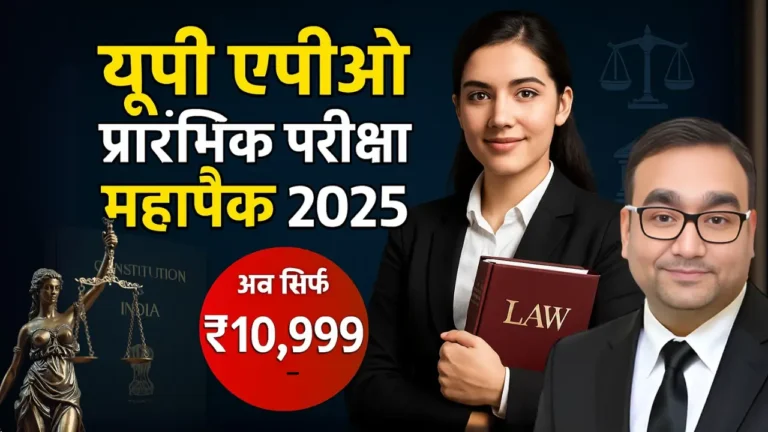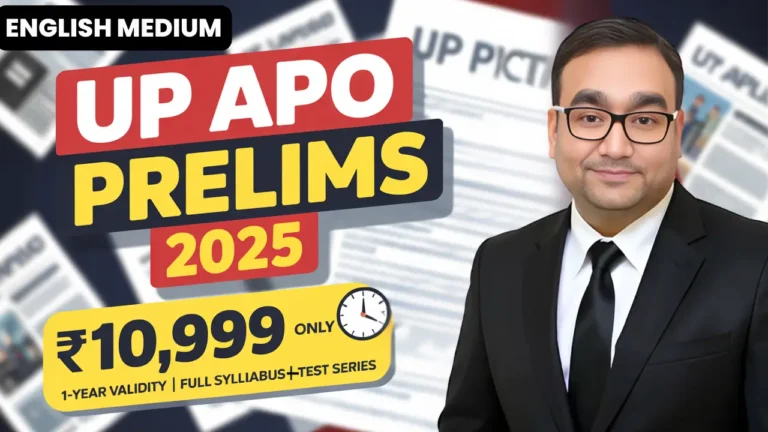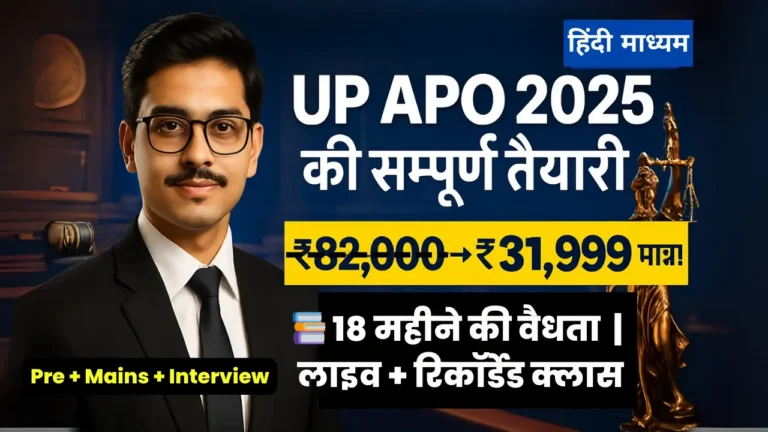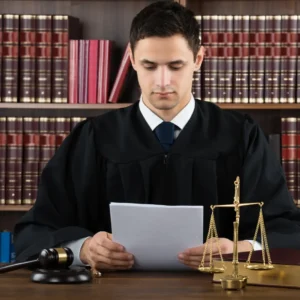President Droupadi Murmu’s Article 143 reference to the Supreme Court in May 2025 has sparked a heated debate on Governors’ powers, deemed assent, and judicial timelines under Articles 200 and 201. This detailed guide explains the controversy, the Tamil Nadu Governor case, and key constitutional questions—perfect for law students, UPSC aspirants, and legal professionals preparing for 2025 exams.
Introduction: A Constitutional Storm in 2025
On May 15, 2025, President Droupadi Murmu made headlines by invoking Article 143(1) of the Indian Constitution, seeking the Supreme Court’s opinion on a controversial ruling about timelines for Governors and the President to assent to state bills. This rare move has ignited a debate on the balance of power between the judiciary, executive, and state legislatures—a topic that’s crucial for law students, UPSC aspirants, and legal professionals in 2025.
The controversy stems from a landmark Supreme Court ruling on April 8, 2025, in a case involving Tamil Nadu Governor R.N. Ravi. The court set timelines for Governors to act on bills and introduced the concept of “deemed assent” if they failed to comply. President Murmu argues that this ruling oversteps constitutional boundaries, raising 14 pointed questions for the Supreme Court to answer.
In this blog, we’ll break down the issue in simple terms, explore the legal provisions involved (like Articles 143, 200, 201, and 142), and explain why this matters for your 2025 exams. Whether you’re a law student, a lawyer, or a constitutional law enthusiast, this guide will help you understand this complex debate and its implications for India’s democracy.
What Happened? The Tamil Nadu Governor Case That Sparked It All
Let’s start with the background. On April 8, 2025, a Supreme Court bench of Justices J.B. Pardiwala and R. Mahadevan delivered a landmark verdict in a case filed by the Tamil Nadu government against Governor R.N. Ravi. The issue? The Governor had delayed assent to 10 bills, some pending since January 2020, and later reserved them for the President’s consideration after the state assembly re-passed them.
The Supreme Court ruled that:
- The Governor’s delay was “illegal and erroneous.”
- Governors must act on bills within a reasonable time, even though Article 200 (which governs Governors’ assent to bills) doesn’t specify a timeline.
- If a Governor fails to act within a set period, the bill is deemed to have received assent—a concept called “deemed assent.”
- The President, under Article 201, must decide on reserved bills within three months, or provide reasons for any delay.
- Both the Governor’s and President’s actions are subject to judicial review.
Using its powers under Article 142 (which allows the court to pass orders for “complete justice”), the Supreme Court declared that the 10 pending Tamil Nadu bills were deemed assented to. This was a historic first—laws came into effect without the Governor’s or President’s signature, sparking both applause and criticism.
President Murmu’s Article 143 Reference: Why She Stepped In
President Droupadi Murmu wasn’t happy with this ruling. On May 15, 2025, she invoked Article 143(1), which allows the President to seek the Supreme Court’s opinion on matters of public or legal importance. She argued that the Supreme Court’s ruling introduces ideas that clash with the Constitution:
- Deemed Assent: The concept of “deemed assent” (automatic approval if timelines aren’t met) is “alien” to the Constitution and undermines the powers of the President and Governors.
- Judicial Timelines: Articles 200 and 201 don’t prescribe any deadlines for Governors or the President to act on bills. So, can the Supreme Court impose a three-month timeline?
President Murmu’s reference includes 14 pointed questions, asking the Supreme Court to clarify the constitutional framework. A Constitution Bench (minimum five judges) will now be formed to answer these questions, making this a landmark moment in Indian constitutional law.
Breaking Down the 14 Questions: A Constitutional Law Goldmine
Let’s dive into the 14 questions President Murmu posed to the Supreme Court. These are perfect for law students preparing for prelims, mains, or interviews in 2025, as they cover key constitutional provisions and concepts.
- What are the constitutional options before a Governor under Article 200?
Article 200 gives Governors three options: assent to the bill, withhold assent (and return it to the assembly with a message), or reserve it for the President’s consideration. But what happens if the Governor delays indefinitely? - Is the Governor bound by the Council of Ministers’ advice under Article 200?
Governors typically follow the advice of the state’s Council of Ministers, but does this apply in all cases when deciding on bills? - Is the Governor’s discretion under Article 200 justiciable?
Can courts review the Governor’s decisions, or is the Governor above judicial scrutiny? - Does Article 361 bar judicial review of the Governor’s actions under Article 200?
Article 361 grants immunity to Governors from legal proceedings while in office. Does this mean their actions on bills are untouchable by courts? - Can the Supreme Court impose timelines on Governors under Article 200?
Since Article 200 doesn’t mention a timeline, can the judiciary create one through its rulings? - Is the President’s discretion under Article 201 justiciable?
Can courts review the President’s decisions on bills reserved by Governors? - Can the Supreme Court impose a three-month timeline on the President under Article 201?
Article 201 also lacks a timeline. Does the judiciary have the power to set one? - Must the President seek the Supreme Court’s opinion under Article 143 when a bill is reserved?
If a Governor reserves a bill for the President, is the President required to consult the Supreme Court? - Are decisions under Articles 200 and 201 justiciable before a bill becomes law?
Can courts intervene in the bill assent process before the bill is officially enacted? - Can the Supreme Court substitute the President’s or Governor’s decisions under Article 142?
Article 142 allows the court to pass orders for “complete justice.” But can it override the President or Governor? - Is a state bill a law without the Governor’s assent under Article 200?
Does a bill passed by a state legislature become law without the Governor’s approval? - Must constitutional questions be referred to a five-judge bench under Article 145(3)?
Article 145(3) requires a minimum five-judge bench for substantial constitutional questions. Was this rule followed in the Tamil Nadu case? - Does Article 142 extend to issuing orders contrary to the Constitution?
Can the Supreme Court use Article 142 to make decisions that conflict with constitutional provisions? - Can the Supreme Court resolve Centre-state disputes outside Article 131?
Article 131 gives the Supreme Court exclusive jurisdiction over Centre-state disputes. Are there other ways to resolve such conflicts?
These questions touch on core constitutional law concepts like federalism, separation of powers, and judicial review—must-know topics for 2025 exams!
The Tamil Nadu Case: What the Supreme Court Said
The April 8, 2025, ruling came in a case filed by the Tamil Nadu government against Governor R.N. Ravi. Here’s a quick recap:
- The Problem: Governor Ravi delayed assent to 10 bills, some since January 2020. After the state assembly re-passed them, he reserved them for the President, who rejected seven, assented to one, and left two undecided.
- The Ruling: Justices J.B. Pardiwala and R. Mahadevan ruled that the Governor’s delay was illegal. They set a timeline: Governors must act “forthwith” (within a month if the bill is re-passed), and the President must decide within three months under Article 201.
- Deemed Assent: Using Article 142, the court declared the 10 bills as assented to, bypassing the Governor and President.
- Judicial Review: The court held that both the Governor’s and President’s actions are subject to judicial review, meaning they can be challenged in court.
This ruling was hailed by Tamil Nadu CM M.K. Stalin as a “historic victory” for federalism, but it drew sharp criticism from Vice President Jagdeep Dhankhar, who called it “judicial overreach.” He argued that the judiciary was acting like a “super Parliament” by legislating timelines and overriding the executive, with no accountability.
Why President Murmu Is Concerned: A Constitutional Critique
President Murmu’s reference highlights several issues with the Supreme Court’s ruling:
- Deemed Assent Undermines Authority: The idea of “deemed assent” (automatic approval if timelines are missed) reduces the constitutional roles of the President and Governors to mere formalities.
- No Timelines in the Constitution: Articles 200 and 201 don’t specify deadlines. By imposing a three-month timeline, the Supreme Court is effectively amending the Constitution—a power reserved for Parliament.
- Judicial Overreach via Article 142: Article 142 allows the court to ensure “complete justice,” but can it override the executive’s constitutional discretion? President Murmu questions whether this stretches Article 142 too far.
- Separation of Powers: The judiciary setting timelines for the executive (Governors and President) blurs the lines between the branches of government, raising concerns about the balance of power in India’s democracy.
These concerns make this case a fascinating study of constitutional law, federalism, and the judiciary’s role in India.
Key Constitutional Provisions Explained
Let’s break down the articles involved in this debate—essential for law students and UPSC aspirants in 2025:
- Article 143(1): Allows the President to seek the Supreme Court’s opinion on questions of law or fact of public importance. The court’s opinion isn’t binding but carries high persuasive value.
- Article 200: Governs Governors’ actions on state bills. Options include assent, withholding assent (and returning the bill), or reserving it for the President.
- Article 201: Deals with bills reserved for the President’s consideration. The President can assent, withhold assent, or return the bill (if not a money bill) for reconsideration.
- Article 142: Empowers the Supreme Court to pass orders for “complete justice” in any case. It’s a powerful tool but has been criticized as a “nuclear missile” (in Vice President Dhankhar’s words) when overused.
- Article 361: Grants immunity to the President and Governors from legal proceedings while in office. But does this shield their actions from judicial review?
- Article 145(3): Requires a minimum five-judge Constitution Bench for substantial questions of constitutional interpretation.
- Article 131: Gives the Supreme Court exclusive jurisdiction over Centre-state disputes.
Understanding these provisions is key to grasping the debate and excelling in constitutional law exams.
Why This Matters for Law Students and UPSC Aspirants in 2025
This case is a goldmine for anyone studying constitutional law or preparing for UPSC exams in 2025. Here’s why:
- Prelims: Memorize Articles 143, 200, 201, 142, and 361, along with key facts like the Tamil Nadu case timeline (April 8 ruling, May 15 reference).
- Mains: Write essays on topics like:
- “Does the judiciary overstep its role by setting timelines for the executive under Article 142?”
- “Balancing federalism and executive discretion: Lessons from President Murmu’s Article 143 reference.”
- Interviews: Impress panels by discussing how this case highlights tensions between federalism, separation of powers, and judicial review. For example: “President Murmu’s reference shows the need for clarity on Governors’ roles in India’s federal structure.”
- Real-World Relevance: This debate affects how laws are made, Centre-state relations, and the judiciary’s role in governance—core issues in Indian polity.
The Bigger Picture: Federalism and Judicial Overreach
This controversy isn’t just about timelines—it’s about the heart of India’s democracy:
- Federalism: Governors are often seen as Centre-appointed figures who can obstruct state governments. The Supreme Court’s ruling aimed to protect states’ rights, but President Murmu argues it undermines the constitutional roles of Governors and the President.
- Judicial Overreach: Vice President Dhankhar’s critique—that the judiciary is acting as a “super Parliament”—raises valid questions. Should the judiciary legislate timelines, or is that Parliament’s job?
- Separation of Powers: The tension between the judiciary (Supreme Court) and executive (President/Governors) highlights the delicate balance in India’s Constitution.
This case could set a precedent for how Governors and the President handle bills in the future, making it a must-watch for legal scholars and students.
Conclusion: A Constitutional Debate to Watch in 2025
President Droupadi Murmu’s Article 143 reference to the Supreme Court has opened a Pandora’s box of constitutional questions. From the powers of Governors under Article 200 to the judiciary’s use of Article 142, this debate touches on federalism, separation of powers, and the rule of law. For law students, UPSC aspirants, and legal professionals in 2025, this is a golden opportunity to dive deep into constitutional law and understand how India’s democracy functions. Stay tuned for the Supreme Court’s opinion—it could reshape Centre-state relations for years to come!
Call-to-Action
Master constitutional law for your 2025 exams with our expert courses at https://doonlawmentor.com/courses! Follow @doonlawmentor on Instagram for daily law tips and updates! #ConstitutionalLaw #LawStudents2025
FAQs for 2025 Exam Prep
Why should law students care about this case?
It covers key constitutional law topics like federalism, judicial review, and separation of powers—perfect for 2025 exams!
What is Article 143 of the Indian Constitution?
It allows the President to seek the Supreme Court’s opinion on matters of public or legal importance.
What did the Supreme Court rule in the Tamil Nadu Governor case?
On April 8, 2025, the court set timelines for Governors and the President to act on bills and introduced “deemed assent” if deadlines weren’t met.
What is Article 200?
It outlines the Governor’s options for state bills: assent, withhold assent, or reserve for the President.
What is Article 201?
It governs the President’s actions on bills reserved by Governors.
Why is President Murmu concerned about the Supreme Court’s ruling?
She argues that “deemed assent” and judicial timelines undermine the constitutional roles of the President and Governors.
What is Article 142, and why is it controversial?
It allows the Supreme Court to pass orders for “complete justice,” but critics like Vice President Dhankhar call it judicial overreach when it overrides the executive.
How does this case affect federalism in India?
It highlights tensions between state governments and Governors, as well as the judiciary’s role in Centre-state disputes.
#Doonlawmentor #Article143 #PresidentReference #SupremeCourtIndia #DeemedAssent #judiciaryexams2025 #IndianConstitution #Article200 #Article201 #GovernorAssent #SCvsExecutive #LegalCurrentAffairs #ConstitutionalLaw #tamilnadugovernorcase #LawStudentsIndia #JudicialReview






